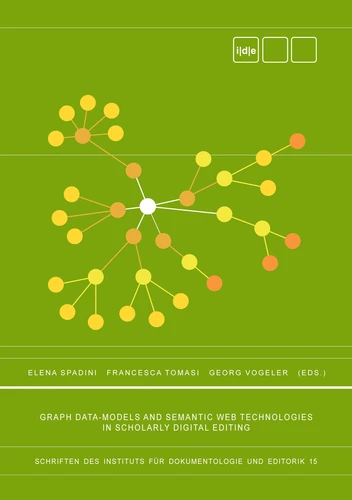Graph Data-Models and Semantic Web Technologies in Scholarly Digital Editing
Par : , ,Formats :
Disponible dans votre compte client Decitre ou Furet du Nord dès validation de votre commande. Le format PDF est :
- Compatible avec une lecture sur My Vivlio (smartphone, tablette, ordinateur)
- Compatible avec une lecture sur liseuses Vivlio
- Pour les liseuses autres que Vivlio, vous devez utiliser le logiciel Adobe Digital Edition. Non compatible avec la lecture sur les liseuses Kindle, Remarkable et Sony
 , qui est-ce ?
, qui est-ce ?Notre partenaire de plateforme de lecture numérique où vous retrouverez l'ensemble de vos ebooks gratuitement
Pour en savoir plus sur nos ebooks, consultez notre aide en ligne ici
- Nombre de pages224
- FormatPDF
- ISBN978-3-7543-5876-4
- EAN9783754358764
- Date de parution18/11/2021
- Protection num.pas de protection
- Taille39 Mo
- Infos supplémentairespdf
- ÉditeurBooks on Demand
Résumé
In scholarly digital editing, the established practice for semantically enriching digital texts is to add markup to a linear string of characters. Graph data-models provide an alternative approach, which is increasingly being given serious consideration. Labelled-property-graph databases, and the W3c's semantic web recommendation and associated standards (RDF and OWL) are powerful and flexible solutions to many of the problems that come with embedded markup.
This volume explores the combination of scholarly digital editions, the graph data-model, and the semantic web from three perspectives: infrastructures and technologies, formal models, and projects and editions.
This volume explores the combination of scholarly digital editions, the graph data-model, and the semantic web from three perspectives: infrastructures and technologies, formal models, and projects and editions.
In scholarly digital editing, the established practice for semantically enriching digital texts is to add markup to a linear string of characters. Graph data-models provide an alternative approach, which is increasingly being given serious consideration. Labelled-property-graph databases, and the W3c's semantic web recommendation and associated standards (RDF and OWL) are powerful and flexible solutions to many of the problems that come with embedded markup.
This volume explores the combination of scholarly digital editions, the graph data-model, and the semantic web from three perspectives: infrastructures and technologies, formal models, and projects and editions.
This volume explores the combination of scholarly digital editions, the graph data-model, and the semantic web from three perspectives: infrastructures and technologies, formal models, and projects and editions.



